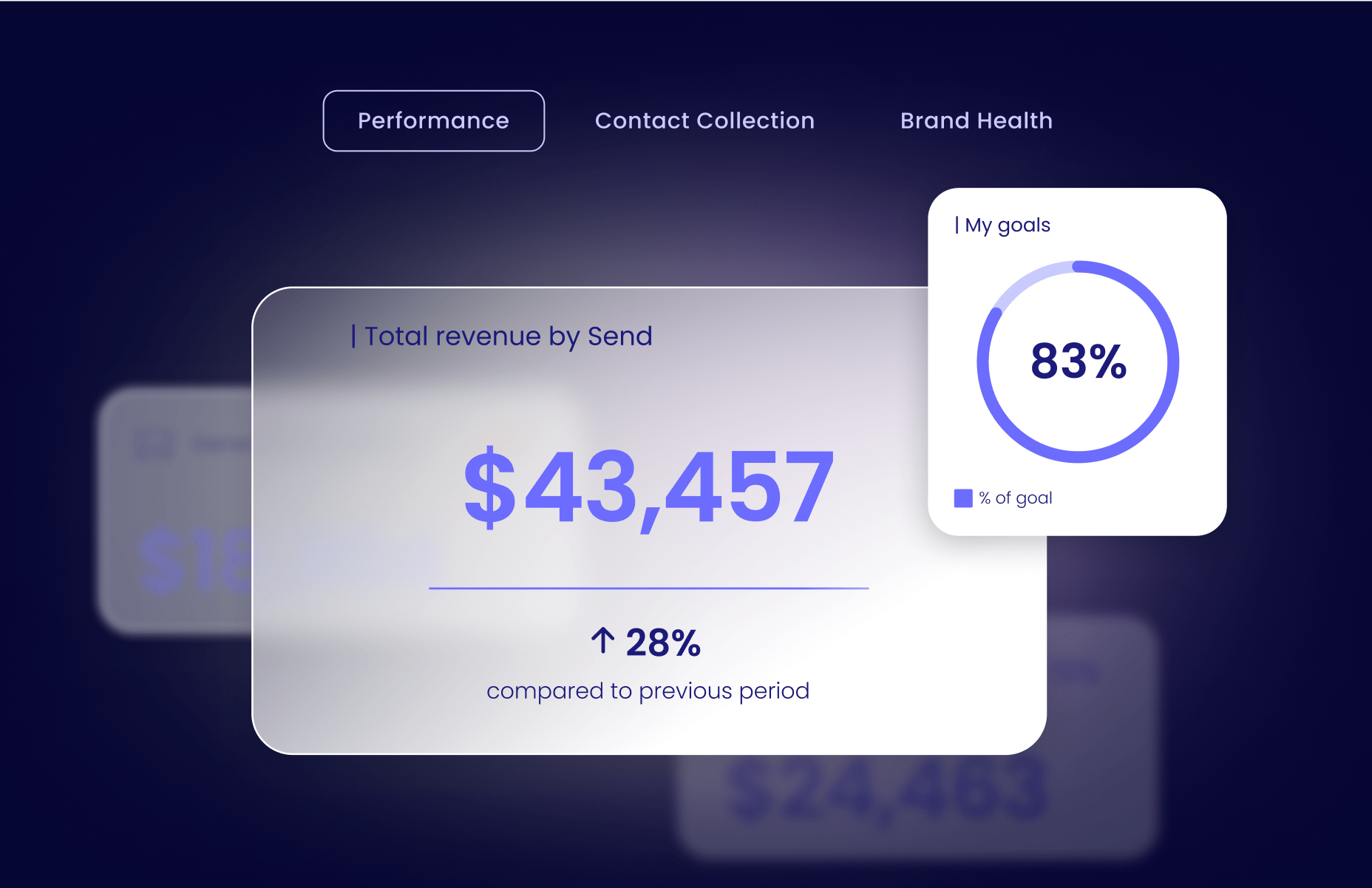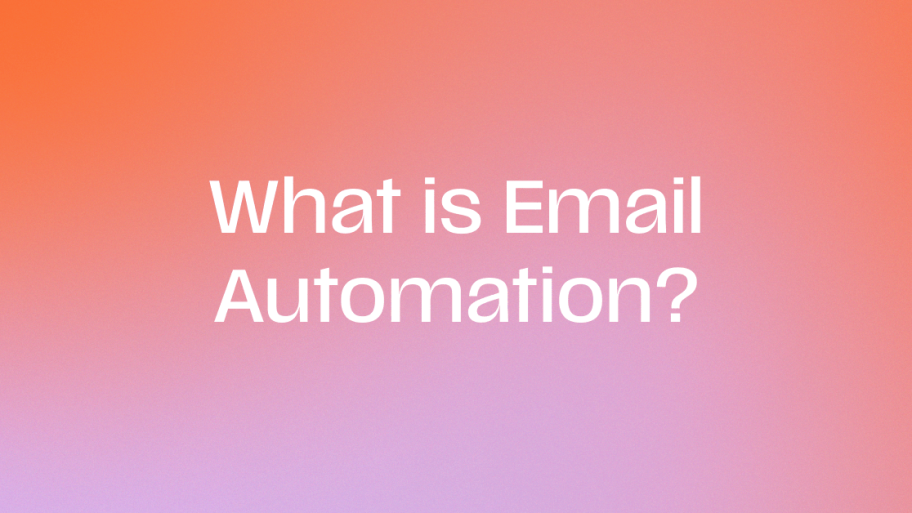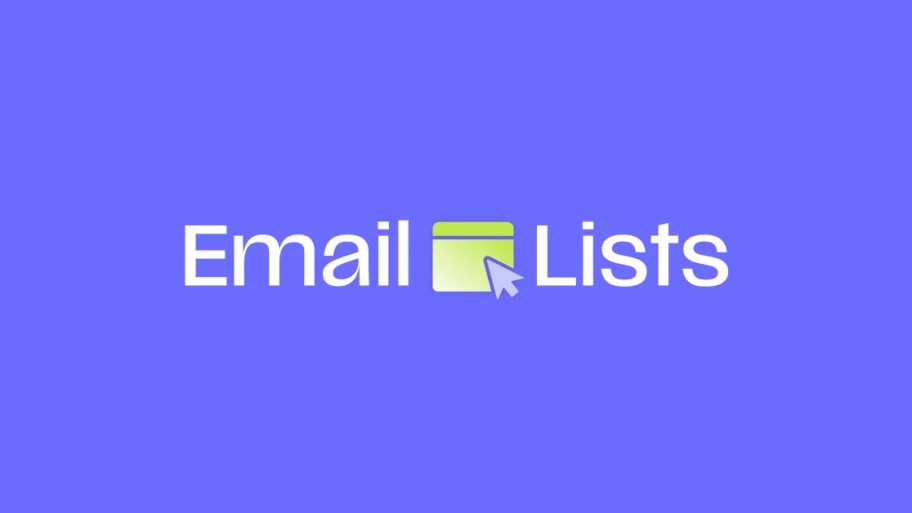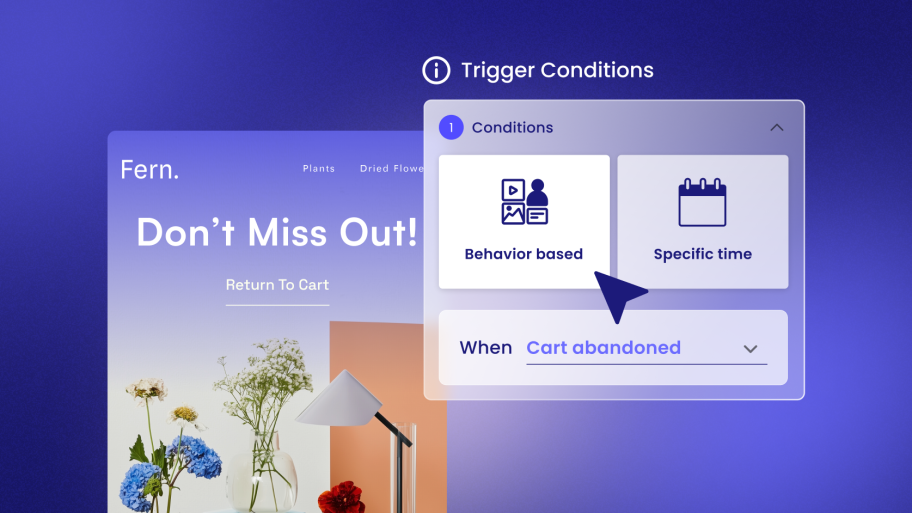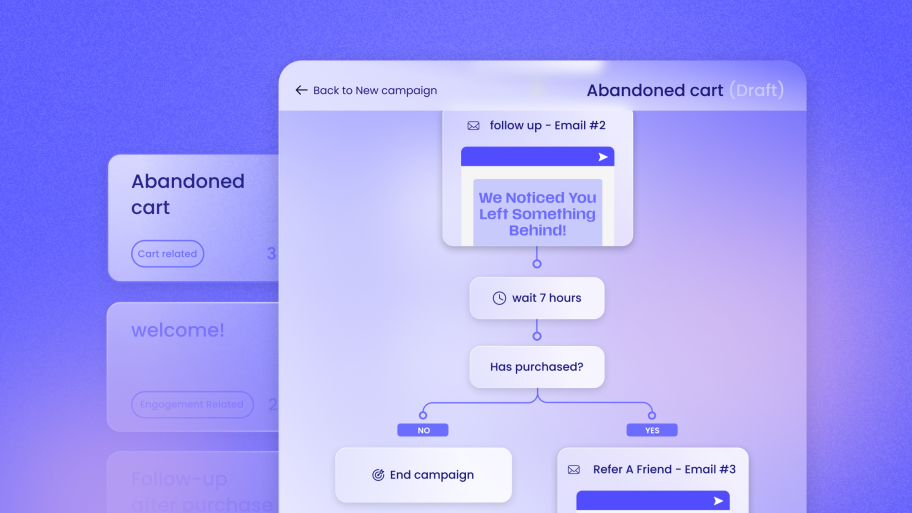Shifting your focus from short-term acquisition to long-term relationships is the key to sustainable success. This is where understanding and increasing Customer Lifetime Value (CLV) becomes your most powerful strategy. This guide will explore exactly what CLV is and provide 18 actionable tactics you can implement to boost it in 2025.
What is Customer Lifetime Value (CLV)?
Customer Lifetime Value (CLV or LTV) is a metric that predicts the total net profit your business will make from any given customer. It’s an estimate of the total revenue a customer will generate for your company throughout their entire relationship with you—from their first purchase to their very last.
Think of it this way: instead of just looking at the value of a single transaction ($50), CLV considers the bigger picture. A customer might spend $50 today, but if they come back every month for the next three years, their value is significantly higher. CLV helps you quantify that long-term worth.
Calculating CLV can range from simple to complex, but a basic approach is:
CLV = (Average Purchase Value) x (Average Purchase Frequency) x (Average Customer Lifespan)
This calculation gives you a powerful number that represents a customer’s future worth, guiding your marketing, sales, and service decisions.
Why CLV is a Game-Changer for Your Business
Focusing on CLV fundamentally changes how you view your business operations. It’s about building a sustainable model, not just chasing quick wins. Here’s why it’s so critical:
- Increases Profitability: It costs significantly more to acquire a new customer than to retain an existing one. By increasing the value of your current customers, you improve your profit margins directly.
- Improves Customer Retention: Strategies aimed at boosting CLV are, by nature, focused on keeping customers happy and engaged. This naturally leads to higher retention rates and a more loyal customer base.
- Guides Marketing Spend: Knowing your CLV helps you determine how much you can afford to spend to acquire a new customer. If the average CLV is $500, you can confidently invest more than if it were only $50.
- Creates Predictable Revenue: A business with a high CLV has a more stable and predictable revenue stream. You can forecast future income more accurately based on the purchasing habits of your loyal customers.
- Identifies Your Best Customers: CLV analysis helps you pinpoint your most valuable customers. You can then study their behavior, find more people like them, and tailor special experiences to keep them happy.
18 Proven Tactics to Increase Your Customer Lifetime Value
Ready to turn one-time buyers into lifelong fans? Here are 18 proven tactics to increase your CLV.
1. Master the Onboarding Process
A customer’s first few interactions with your brand set the tone for the entire relationship. A smooth, welcoming, and informative onboarding process validates their purchase decision and reduces the risk of early churn.
Why it works: Effective onboarding shows customers how to get the most value from your product or service right away. This immediate success builds confidence and encourages them to stick around.
How to implement it:
- Welcome Email Series: Don’t just send a single receipt. Create a series of automated emails that welcomes new customers, introduces key features, provides helpful tips, and shows them where to find help.
- In-App or Product Guides: For software or complex products, use guided tours or interactive tutorials to walk users through essential functions.
- Personalized Welcome: If possible, a personal welcome call or video message can make a huge impact, especially for high-value clients.
- Check-in After First Use: A week or so after their purchase, send a follow-up email asking about their experience and offering assistance. This proactive step shows you care about their success.
2. Implement a Tiered Loyalty Program
Loyalty programs are a classic retention tool, but a tiered system adds a layer of gamification. Customers are motivated to spend more to unlock higher levels with better perks, which directly increases their lifetime value.
Why it works: Tiers create a sense of achievement and exclusivity. As customers climb the ranks, they feel more invested in your brand and are less likely to switch to a competitor.
How to implement it:
- Define Your Tiers: Create distinct levels (e.g., Bronze, Silver, Gold). Make the entry-level easy to achieve to get customers engaged, with progressively more valuable rewards at higher tiers.
- Offer Tangible Benefits: Rewards can include points per dollar spent, exclusive discounts, early access to new products, free shipping, or a dedicated customer service line.
- Communicate Status Clearly: Ensure customers can easily see their current tier, how close they are to the next one, and the benefits available at each level.
- Make it Aspirational: The top tier should feel truly special, offering unique experiences or rewards that aren’t available to anyone else.
3. Leverage Advanced Email Marketing Automation
Email remains one of the most effective channels for nurturing customer relationships. While basic automation is a start, advanced flows can turn your email list into a powerful CLV-boosting engine.
Why it works: Advanced automation delivers hyper-relevant, timely messages that anticipate customer needs and guide them through their entire lifecycle. This consistent, intelligent communication builds deep familiarity and trust, making repeat purchases a natural next step.
How to implement it:
- Abandoned Cart Reminders: A must-have for e-commerce. Create a 3-part series: a simple reminder after 1 hour, a message highlighting product benefits or reviews after 24 hours, and a final email with a small incentive (like free shipping) after 48 hours.
- Sophisticated Post-Purchase Follow-ups: Go beyond a single “thank you.” Create flows that cross-sell complementary products, ask for a review after an appropriate amount of time, and then transition the customer into a long-term nurture sequence.
- Replenishment Reminders: For consumable products (e.g., coffee, skincare, supplements), set up an automation to email customers shortly before they are expected to run out, making reordering effortless.
- Win-Back Campaigns: Target customers who haven’t purchased in a while with a multi-step campaign that escalates the offer to bring them back.
- Birthday and Anniversary Automations: A personalized email with a special gift or discount on a customer’s birthday or the anniversary of their first purchase is a simple, highly effective way to build an emotional connection.
Setting up these automated flows doesn’t have to be complex. For businesses built on WordPress and WooCommerce, using a native communication toolkit can make this seamless. Platforms like Send by Elementor allow you to build these advanced automations directly within your WordPress dashboard, using deep store integration to trigger flows based on customer behavior without complex third-party tools.
4. Personalize Every Step of the Customer Experience
Today’s consumers expect more than generic marketing blasts. Personalization involves using customer data to tailor communications, product recommendations, and offers to an individual’s specific needs and preferences.
Why it works: Personalization makes customers feel seen and understood. When you show them you know who they are and what they like, you build a much stronger emotional connection that fosters loyalty.
How to implement it:
- Use Their Name: This is the simplest form of personalization. Address customers by their first name in emails and on your website.
- Dynamic Product Recommendations: Use purchase and browsing history to suggest products they are likely to be interested in via email and on your site.
- Personalized Offers: Send special discounts on their birthday or on the anniversary of their first purchase.
- Segmented Content: Tailor the content of your newsletters or promotional emails based on past purchases or expressed interests.
5. Provide Proactive Customer Support
Great customer support is reactive; world-class support is proactive. Instead of waiting for customers to come to you with problems, anticipate their needs and reach out first.
Why it works: Proactive support shows that you are invested in your customer’s success and are paying attention to their experience. It can solve problems before they even become frustrating, turning a potential negative into a positive interaction.
How to implement it:
- Monitor for Signs of Trouble: If a customer is repeatedly visiting your FAQ page or seems stuck on a certain feature, a support agent could reach out via live chat to offer help.
- Send Helpful Resources: If a customer buys a complex product, proactively send them a setup guide or a video tutorial.
- Communicate About Issues: If you know there’s a shipping delay or a temporary site outage, inform affected customers before they discover it themselves. Transparency builds trust.
6. Gather and Act on Customer Feedback
Your customers are your best source of information for improving your business. Actively soliciting their feedback—and more importantly, acting on it—shows them that you value their opinion and are committed to getting better.
Why it works: When customers see their suggestions being implemented, they feel like a part of your brand’s journey. This sense of ownership is a powerful driver of loyalty and increases their long-term value.
How to implement it:
- Use Surveys: Send short, simple surveys after a purchase or support interaction. Net Promoter Score (NPS) surveys are excellent for gauging overall loyalty.
- Encourage Reviews: Ask for product or service reviews. This provides valuable social proof and gives you direct feedback.
- Create a Feedback Loop: Don’t just collect feedback; close the loop. When you make a change based on customer suggestions, announce it! Send an email saying, “You asked, we listened.”
- Monitor Social Media: Pay attention to what people are saying about your brand online and respond to both positive and negative comments.
7. Create a Content-Driven Email Newsletter
Beyond automated messages, a regular, content-rich newsletter builds a relationship that isn’t based solely on transactions. It establishes your authority and keeps your brand top-of-mind.
Why it works: A valuable newsletter gives customers a reason to hear from you even when they aren’t actively shopping. By providing consistent value, you build trust and become a welcome presence in their inbox, making them more receptive to promotional messages when you do send them.
How to implement it:
- Establish a Consistent Schedule: Whether it’s weekly, bi-weekly, or monthly, stick to a schedule so customers know when to expect it.
- Focus on Value, Not Just Sales: Follow the 80/20 rule: 80% of your content should be helpful, educational, or entertaining, while only 20% is directly promotional.
- Showcase Your Brand’s Personality: Use your newsletter to tell stories, share behind-the-scenes content, and let your brand’s unique voice shine through.
- Feature Community Content: Include customer testimonials, reviews, or user-generated content to build social proof and make your community feel seen.
8. Offer Flexible Subscriptions and Memberships
For businesses where it makes sense, a subscription or membership model is one of the most direct ways to increase CLV. It turns single transactions into a predictable, recurring revenue stream.
Why it works: Subscriptions automate the repeat purchase process. Customers enjoy the convenience of “set it and forget it,” while the business benefits from consistent cash flow and a locked-in customer base.
How to implement it:
- Offer “Subscribe & Save”: For consumable products, offer a small discount for customers who sign up for automatic recurring deliveries.
- Create a Membership Program: Offer a paid membership that provides benefits like free shipping on all orders, exclusive access to content, and member-only discounts.
- Provide Flexibility: Allow customers to easily pause, cancel, or change their subscription frequency. A difficult cancellation process creates a negative final experience and burns bridges for good.
9. Use Advanced Segmentation to Deliver Relevant Offers
Not all customers are the same. Segmentation is the process of dividing your customer base into groups based on shared characteristics to deliver more relevant communication.
Why it works: Segmentation allows you to move beyond one-size-fits-all marketing. By sending highly relevant messages and offers to each group via email and SMS, you dramatically increase conversion rates and strengthen the customer relationship.
How to implement it:
- VIP Segment: Create a segment for your top 5-10% of customers based on total spend or order frequency. Send them exclusive perks, early access to sales, and special recognition.
- Potential Churn Segment: Identify customers who haven’t purchased in a while but haven’t yet hit your “dormant” threshold. Target them with a gentle “we miss you” campaign or highlight what’s new.
- Category-Specific Segments: Group customers by the product categories they’ve purchased from. If someone buys running shoes, send them content and offers about running apparel, not tennis rackets.
- Discount-Driven Segment: Identify customers who only purchase when they have a coupon. You can target this group with specific promotions while avoiding sending discounts to customers who would have paid full price.
This is another area where a deeply integrated tool is invaluable. For a WooCommerce store, a system like Send by Elementor that has direct access to your store’s data makes this level of segmentation simple. You can create rules based on “total customer spend,” “last order date,” or “product category purchased” right inside WordPress, then target those segments with tailored email and SMS campaigns.
10. Perfect Your Upselling and Cross-selling Strategy
Upselling is the practice of encouraging customers to purchase a more expensive version of a product, while cross-selling involves recommending related or complementary items.
Why it works: When done correctly, upselling and cross-selling are not just about increasing the order value; they’re about helping the customer make a better choice. You are adding value by ensuring they have everything they need for the best possible experience.
How to implement it:
- Make it Relevant: The upsell or cross-sell must make sense. If someone is buying a camera, cross-selling a memory card and a camera bag is helpful. Trying to upsell them to a lawnmower is not.
- Showcase the Value: Clearly explain the benefit of the upgraded version or the complementary product.
- Timing is Everything: The best time to cross-sell is on the product page or in the shopping cart. The best time for a post-purchase upsell (e.g., “Add an extended warranty”) is on the confirmation page or in a follow-up email.
- Don’t Be Pushy: Offer suggestions, but don’t force them. The goal is to be a helpful advisor, not a pushy salesperson.
11. Build a Community Around Your Brand
People want to belong. Creating a community gives your customers a space to connect with each other and with your brand on a deeper level.
Why it works: A strong community fosters a powerful sense of identity and loyalty. Customers are no longer just buying a product; they are part of a tribe. This emotional investment makes them incredibly valuable and unlikely to leave.
How to implement it:
- Create a Private Group: A Facebook group, Slack channel, or dedicated forum for customers can be a great place for them to ask questions, share tips, and connect.
- Host Events: Organize virtual or in-person events, workshops, or meetups for your community members.
- Encourage User-Generated Content: Run contests or create hashtags encouraging customers to share photos or stories of how they use your products.
- Feature Your Customers: Spotlight community members on your social media or blog to make them feel recognized and valued.
12. Surprise and Delight Your Customers
Sometimes, the most powerful gestures are the unexpected ones. Going above and beyond to “surprise and delight” customers creates memorable experiences that they will share with others.
Why it works: Unexpected kindness cuts through the noise of everyday business transactions. It generates powerful positive emotions and word-of-mouth marketing, solidifying a customer’s loyalty for the long term.
How to implement it:
- Handwritten Thank-You Notes: In a digital world, a personal, handwritten note can make a massive impact.
- Include a Small Gift: Add an unexpected freebie to their order.
- Offer a Spontaneous Upgrade: Occasionally upgrade a loyal customer’s shipping for free or give them early access to a new feature.
- Remember Personal Details: If a customer mentioned their dog in a support chat, sending a small dog toy with their next order is an unforgettable gesture.
13. Simplify the Return and Exchange Process
No one likes making returns, but a difficult or costly return process can permanently damage a customer relationship. Making it easy and hassle-free shows that you stand behind your product and trust your customers.
Why it works: A positive return experience can actually increase a customer’s trust in your brand. Knowing they can easily return something if it’s not right gives them the confidence to make future purchases.
How to implement it:
- Have a Clear Policy: Make your return policy easy to find and understand. Avoid confusing jargon.
- Offer Free Returns: If possible, offering free return shipping removes a major point of friction.
- Provide a Pre-Paid Label: Include a return label in the original package or make it easy to print one from your website.
- Process Refunds Quickly: Once you receive the returned item, process the refund or exchange promptly. Long delays cause anxiety and frustration.
14. Send Timely SMS Notifications and Offers
While email is great for detailed communication, SMS is perfect for short, urgent, and high-impact messages. With open rates far exceeding email, SMS is a powerful channel for cutting through the noise.
Why it works: SMS feels personal and immediate. It’s ideal for time-sensitive information that you want customers to see right away, like shipping updates or flash sale announcements.
How to implement it:
- Get Explicit Permission: SMS is a very personal channel. You must get clear, explicit opt-in from customers before you start sending them messages.
- Use it for High-Value Communications:
- Order and shipping confirmations.
- Flash sale alerts for VIP customers.
- Appointment reminders.
- Keep it Short and Sweet: Get straight to the point and always include a clear call-to-action or link.
Integrating this into your workflow is key. A unified communication tool that handles both email and SMS, like Send by Elementor, simplifies this process. You can manage your opt-in lists and create automated SMS campaigns (like shipping notifications) from the same WordPress dashboard you use for everything else, ensuring a consistent customer experience.
15. Reactivate Dormant Customers
Don’t give up on customers who haven’t purchased in a while. A targeted “win-back” campaign can be a cost-effective way to bring them back into the fold and restart their customer journey.
Why it works: These individuals are already familiar with your brand; they just need a reason to come back. It’s often easier to reactivate a past customer than to acquire a brand new one.
How to implement it:
- Identify Dormant Customers: Define what “dormant” means for your business (e.g., no purchase in 90 days). Create a segment of these customers.
- Launch a Win-Back Email Series:
- Email 1: The Gentle Nudge: “We miss you! Here’s what’s new.”
- Email 2: The Special Offer: “Come back and enjoy 15% off your next order.”
- Email 3: The Last Chance: “This is our best offer to get you back. Your discount expires soon.”
- Ask for Feedback: If they don’t respond to offers, send a simple survey asking why they haven’t been back. Their answers could provide invaluable insights.
16. Offer Multi-Channel Customer Service
Customers want to be able to reach you on the channel that is most convenient for them at that moment. Offering support across multiple channels ensures you are accessible whenever and wherever they need you.
Why it works: Convenience is a key driver of customer satisfaction. By being available via email, phone, live chat, and social media, you reduce customer effort and make it easy for them to get the help they need.
How to implement it:
- Choose the Right Channels: You don’t need to be everywhere, but you should be where your customers are. Start with email and phone, and consider adding live chat for instant support.
- Maintain Consistency: Ensure the quality of support is high across all channels. An agent should have access to the customer’s history regardless of how they make contact.
- Set Clear Expectations: Let customers know your hours of operation for each channel and the expected response time.
17. Create Valuable, Exclusive Content
Content isn’t just for attracting new leads; it’s a powerful tool for retaining existing customers. By providing valuable content that helps them get more out of your products or master a related skill, you become an indispensable resource.
Why it works: Great content builds authority and trust. It positions your brand as an expert in its field and gives customers a reason to engage with you beyond just making a purchase.
How to implement it:
- Customer-Only Blog or Resource Hub: Create in-depth guides, video tutorials, or webinars that are only accessible to paying customers.
- Advanced How-To Guides: Show customers advanced ways to use your product that they might not have discovered on their own.
- Industry Insights: Share exclusive reports or analysis that helps your customers stay ahead in their own field.
- Case Studies: Showcase how other customers are succeeding with your product to inspire and educate others.
18. Track Key Metrics and Optimize Continuously
You can’t improve what you don’t measure. To truly increase your CLV, you need to track it alongside other key retention metrics and continuously test new strategies to see what works.
Why it works: Data provides the truth. By tracking metrics, you can move from guesswork to informed decision-making, systematically improving your processes and increasing customer value over time.
How to implement it:
- Key Metrics to Track:
- Customer Lifetime Value (CLV): The north star metric.
- Customer Retention Rate: The percentage of customers you keep over a given period.
- Churn Rate: The percentage of customers you lose. This is the inverse of retention.
- Repeat Purchase Rate: The percentage of customers who have made more than one purchase.
- Net Promoter Score (NPS): A measure of customer loyalty and satisfaction.
- Use an Analytics Dashboard: Have a central place where you can monitor these metrics.
- A/B Test Your Strategies: Test different offers, email subject lines, and loyalty program perks to see what resonates most with your customers.
Putting It All Together: Your CLV Action Plan
Reading through 18 tactics can feel overwhelming. The key is not to implement everything at once. Start small, focus on the fundamentals, and build from there.
- Start with the Foundation: Ensure you have a solid customer onboarding process and are actively gathering feedback. These are the building blocks of a good relationship.
- Automate Your Communications: Implement an abandoned cart and a post-purchase follow-up email series. These are low-hanging fruit that provide a quick return. Then, begin developing a consistent, value-driven newsletter.
- Choose One Major Initiative: Pick one bigger strategy to tackle per quarter, whether it’s launching a loyalty program, building a community, or implementing advanced customer segmentation.
By consistently focusing on delivering value and improving the customer experience, you will naturally increase the lifetime value of your customers. It’s a long-term strategy, but it’s the most reliable path to building a resilient, profitable, and beloved brand.
